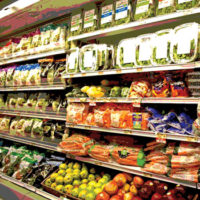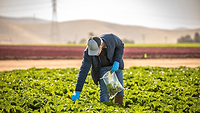Leveraging Food Safety Data to Improve Operations

As high-profile foodborne illness outbreaks continue to make headlines, critics in the government, the industry, the legislature and the public are calling for the establishment of a single federal regulatory food agency to combat the view that the current structure is ineffective and reactionary. This year, the nonpartisan U.S. Government Accountability Office (GAO), the investigative arm of the U.S. Congress, added the country’s food safety system to its list of “high risk” operations. The fact that 15 different federal agencies administer more than 30 major food laws regulating food safety is often pointed out as a major problem. The GAO has urged in the report that a fundamental reexamination of the federal food safety system is warranted.
The effectiveness of having a single government agency for food safety in the U.S. has been and will continue to be debated. One fundamental process that is often overlooked is the leveraging of available food safety data used among the government agencies responsible for food safety to act more quickly and effectively given the current structure. In effect, the process of leveraging unifies operating groups to act as one more effectively.
What is Leveraging About?
Leveraging is all about sharing resources (such as data) to amplify potential gains (improvement in operations). For example, the U.S. Food and Drug Administration (FDA) has long been aware of the value of leveraging in improving its operations and has written a handbook on the subject as a guidance document agency resource for effective collaborations.
The Foodborne Diseases Active Surveillance Network (FoodNet) is the principal foodborne disease component of the Centers for Disease Control and Prevention’s (CDC) Emerging Infections Program (EIP). FoodNet is an excellent example of leveraging as a collaborative project of the CDC, the 10 EIP sites, the U.S. Department of Agriculture (USDA), and the FDA. The EIP is a population-based network of CDC and state health departments, working with collaborators (local health departments, public health laboratories, clinical laboratories, infection control practitioners, healthcare providers, academic institutions, and other federal agencies) to assess the public health impact of emerging infections and to evaluate methods for their prevention and control.
 The food industry today has an ever increasing need to integrate and leverage the vast amount of information available to focus on the data critical to food safety in a holistic manner. Consumer demand for food variety and choices continues to drive an increasing demand for global versus locally controlled sourcing of product which has the potential to increase food safety and security risks (Figure 1).
The food industry today has an ever increasing need to integrate and leverage the vast amount of information available to focus on the data critical to food safety in a holistic manner. Consumer demand for food variety and choices continues to drive an increasing demand for global versus locally controlled sourcing of product which has the potential to increase food safety and security risks (Figure 1).
There are a vast number of government and non-government agencies, institutions, and organizations all involved with the collection of food safety data. The Food Safety Research Consortium is a collaboration among diverse research institutions to improve the effectiveness of the U.S. food safety system in reducing foodborne illness. The consortium’s website (www.rff.org/fsrc/fsii/links.htm) provides an opportunity to appreciate the complexity of the number of regulatory, academic research and industry organization sources available for information relating to food safety.
How can the food industry leverage this collected data to really make a difference? The answer is to take a holistic approach to ensure continuous improvement of food safety systems, considering seven key elements described here that can increase the effective application of this approach in your operation.
Take a Holistic Approach
Making continual improvement in operations is dependent on looking at all of the critical data being generated and available using a holistic approach. The cornerstone of a holistic approach is the overall food safety management system covering the operations. The International Organzation for Standardization’s (ISO) 22000 provides a excellent model for a food safety quality management system incorporating ongoing processes for reviewing data from all critical areas that impact operations such as audits, customer feedback, process performance, product conformity, and corrective and preventive actions (www.iso.org).
ISO 22000 integrates the principles of a Hazard Analysis and Critical Control Point (HACCP) system and application steps developed by the Codex Alimentarius Commission along with ISO 9001 for Quality Management Systems. ISO 22000 can be applied independently of other management system standards or integrated with existing management system requirements and can be applied to all types of organizations in the food supply chain from farm to table. By means of auditable requirements, it combines the HACCP plan with prerequisite programs.
Hazard analysis is the key to an effective food safety management system, since conducting a hazard analysis assists in organizing the knowledge required to establish an effective combination of control measures. ISO 22000 requires that all hazards that may be reasonably expected to occur in the food chain, including hazards that may be associated with the type of process and facilities used, are identified and assessed. Thus, it provides the means to determine and document why certain identified hazards need to be controlled by a particular organization and why others need not.
Leveraging Food Safety Data for Improvement
Regulatory and customer requirements are increasing their demands for proof of food safety through verification of compliance with performance-based criteria specifications. Sources of food safety data may originate from such areas as laboratory testing, audits, regulatory actions and customer complaints. This data is often available in many different formats and locations, making it difficult to monitor for trends beyond just looking at the failures. Ingredients and finished product are often tested multiple times at each transfer point in the supply chain. Compliance audits are often done on the same supplier multiple times for the same attributes by different organizations. All of these factors contribute to wasting resources due to inefficiencies and driving up costs in operations.
The following items should be considered regarding leveraging of food safety data for increased effectiveness:
1. Establish Key Food Safety Performance Indicators. Establish and review the key food safety performance indicators in your operations to be monitored. The number of key indicators to monitor will depend on the size and complexity of the operations, but should not be excessive in number and must always be relevant to ability of the individuals in the operations unit to control the situation.
2. Eliminate Duplication of Efforts. Consider all available data sources as inputs to avoid duplication of efforts. Nearly all segments of the food industry have supporting organizations that can provide technical guidance and support related to specific food safety requirements. The Grocery Manufacturers/Food Products Association’s GMA-SAFE audit program is an example of a shared data approach to avoid duplication in auditing (www.gma-safe.org). The GMA-SAFE audit platform represents a potential food industry savings of $5 billion per year worldwide.
Suppliers are often required by manufacturers to provide certificates of analysis (COAs) to prove evidence of conformance to specifications. The data related to food safety should be provided in a manner that enables monitoring of performance trends that would signal a possible process change.
3. Identification of Gaps in Current Programs. Identify any gaps in your operations related to food safety data availability for decision making and enlist third party resources to help provide this information. Third party resources can provide critical data related to auditing assistance, testing and source inspections that would otherwise not be feasible to obtain, especially as global versus local sourcing of ingredients continues to increase.
4. Consider Design of Experiments. Sound statistical principles should be used and defined whenever possible to ensure that the maximum information about food safety is leveraged from the minimum amount of data. Design of Experiments (DOE) is a systematic approach to investigation of a system or process. A series of structured tests are designed in which planned changes are made to the input variables of a process or system. The effects of these changes on a predefined output are then assessed. DOE is important as a formal way of maximizing information gained while minimizing resources required. It has more to offer than “one change at a time” experimental methods, because it allows a judgment on the significance to the output of input variables acting alone, as well input variables acting in combination with one another.
5. Predictive Modeling of Data. Predictive microbiology uses mathematical models to define the growth kinetics of food microorganisms and predict microbial behavior over a range of conditions. Predictive microbiology is used to assess the risks of food processing, distribution, storage and food handling, and to implement control measures in order to protect the microbiological quality of foods, important for both food safety and product quality.
The USDA’s Agricultural Research Service (ARS) Pathogen Modeling Program (PMP) is a software program which is utilized by the food industry to estimate pathogen behavior in food. Users are able to input specific information about their food products, and receive predictions of pathogen behavior via easy-to-read graphical output.
6. Monitoring Food Safety Trends and Alerts. The complexity and volume of information combined with the speed and availability of technology together have outpaced the ability of end users to receive efficient, meaningful information—without excessive processes and manual effort to manage the information. A web-enabled dashboard-style presentation format of the key food safety performance indicators is essential for effective monitoring of food safety operations. RSS web feeds can provide near real time notifications of news specific items of interest such as recalls and regulatory changes.
Utilization of statistical analysis of the various food safety data information available into a consolidated format for exception reporting and notifications can leverage that data into an effective early warning system to go from being in a reactive mode on failures to more of a preventive and predictive mode regarding food product safety. Statistical process control (SPC) techniques, such as control charts, enable recognition of trends requiring actions before processes generate out-of-specification product.
7. Acting on the Information. By having a strong base of food safety data available coupled with statistical analysis software tools, justification and validation of changes to equipment, processes and personnel becomes much easier to act upon. Integrating the supply chain into the applicable and actionable food safety data information available is critical for making significant and effective improvements happen.
If all aspects of the food industry can move to the principle that food safety is not a competitive advantage, then leveraging of food safety data in a collaborative environment will continue to become an effective means of improvement in operations.
Arthur Rumpf is Technical Manager of Food Programs for Canton, MA-based Shuster Laboratories, which provides testing, audit, inspection and sourcing services to the food industry. He has over 25 years in quality management roles within the food and beverage industry.
>Looking for a reprint of this article?
From high-res PDFs to custom plaques, order your copy today!








